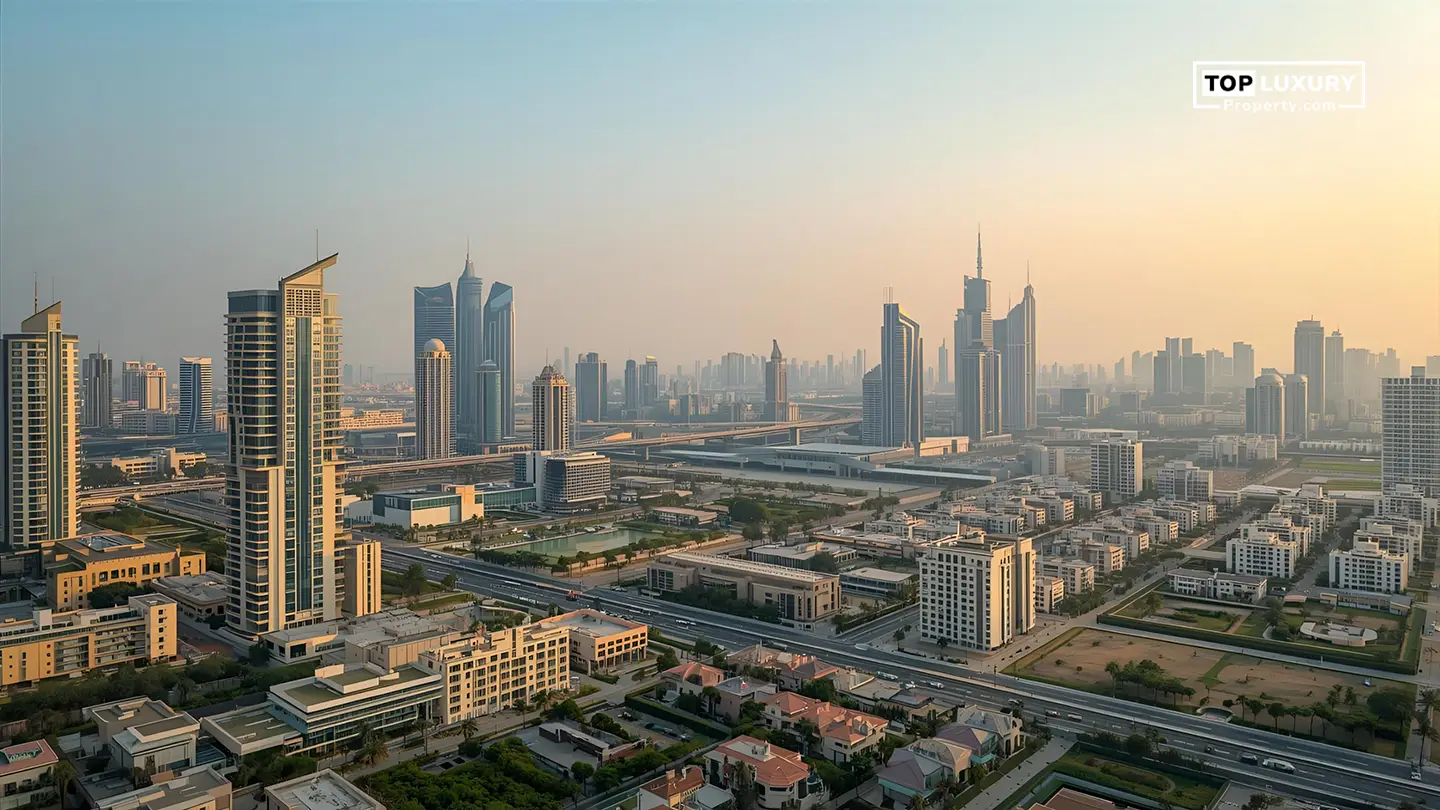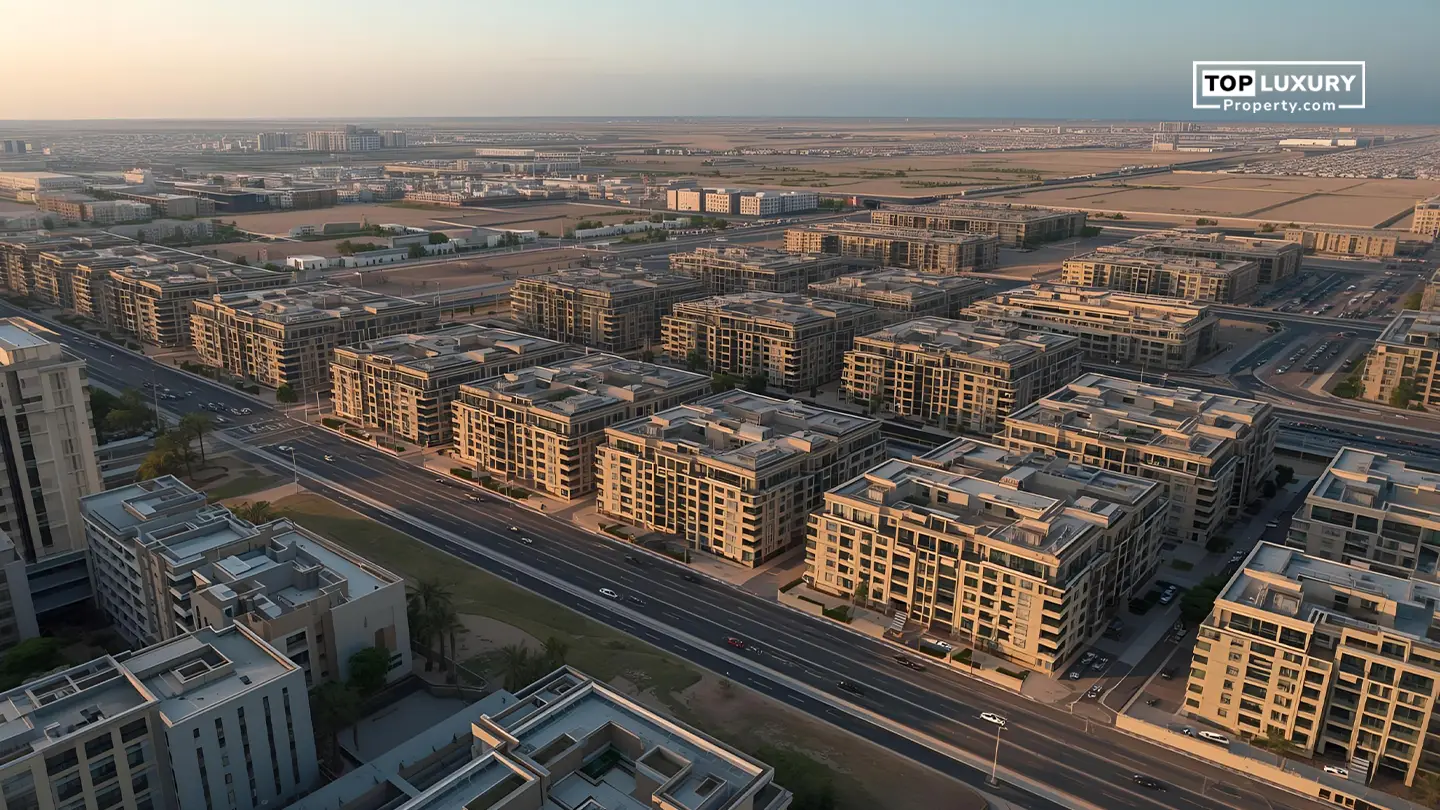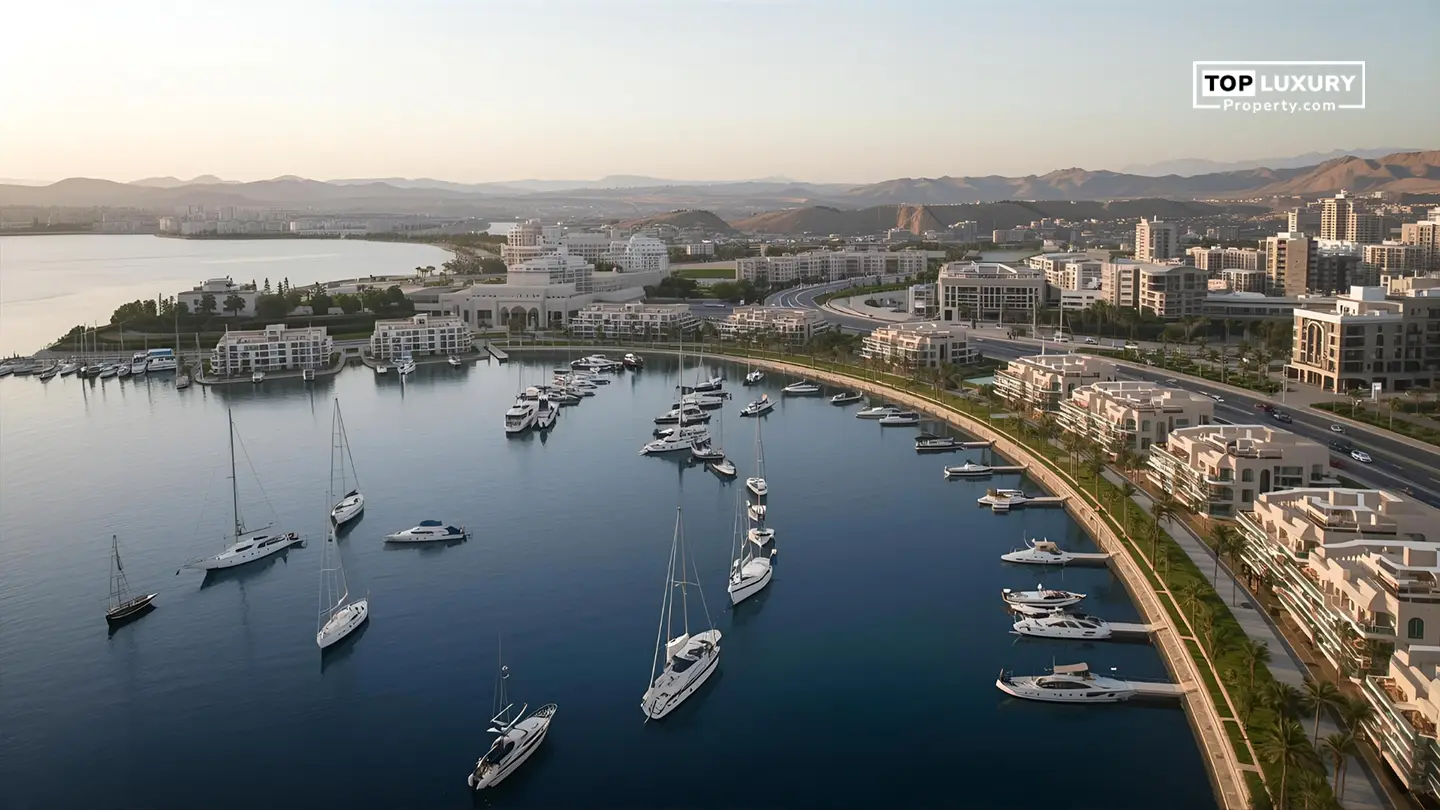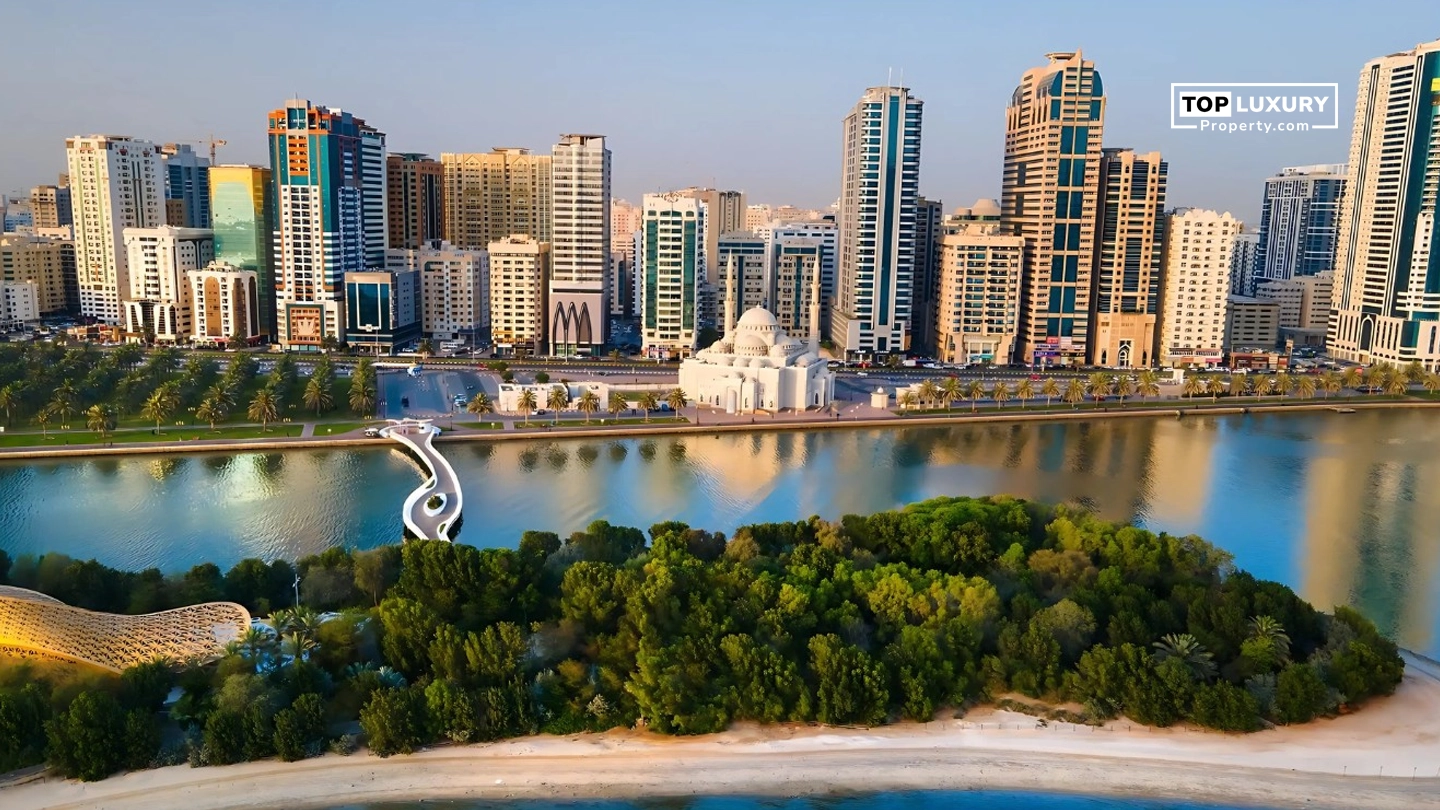Dubai’s Infrastructure Renaissance: A Golden Opportunity
Dubai is undergoing a massive infrastructure overhaul to reduce congestion, increase sustainability and improve quality of life. These projects are not just about roads; they’re the drivers of urban growth and economic diversification. For real estate investors, this is the golden era. Mobility directly correlates with property values, especially in areas connected by new roads, bridges and transport hubs.
Major Infrastructure Projects in Dubai

Let’s explore some of the most game-changing developments driving the Dubai connectivity boom and enhancing real estate investment Dubai prospects.
Al Fay Street Development
Costing Dhs1.5 billion, Al Fay Street will feature five major intersections, increasing capacity to 64,400 vehicles/hour. It will serve over 600,000 residents and improve access to communities like JVC, Sports City, and The Oasis.
Al Mustaqbal Street Project
With a Dhs3.7 billion budget, this project includes 6.2 km of bridges and tunnels. Capacity will increase from 9,000 to 12,000 vehicles/hour. Phase 1 around Trade Centre Roundabout has cut delays from 12 minutes to 90 seconds—benefiting DIFC and DWTC.
Al Khail Road Upgrades
Widened exits and bridges now support 6,000 vehicles/hour, doubling previous capacity. Oud Metha and Nad Al Sheba have seen travel times cut by 75% and 83% respectively, triggering sharp increases in property values.
Al Qudra Street Project
This Dhs798 million in upgrades will reduce travel time from 9.4 to 2.8 minutes. The project touches Sheikh Mohammed bin Zayed Road, Emirates Road, and beyond, enabling smoother access to outer communities.
Al Shindagha Corridor Improvement Project
Spanning 13km, this Dhs5.3 billion project connects Deira and Bur Dubai. Travel times will shrink from 104 minutes to just 16 minutes, serving over 1 million residents.
Dubai Loop
Backed by Elon Musk’s Boring Company, this 17km underground high-speed tunnel will move up to 100,000 passengers/hour. Its 11 stations will redefine connectivity between Dubai’s busiest districts.
Dubai Metro Blue Line
This new 30km line will operate by 2029, serving 200,000 passengers daily—320,000 by 2040. At Dhs20.5 billion, it’s a pillar of Dubai’s transit-oriented development plan.
Dubai Walk
By 2040, this 6,500km pedestrian network will interlink iconic areas such as Burj Khalifa and Dubai Marina. It will feature 110 bridges and underpasses, cutting traffic at crossings.
Etihad Rail
Offering high-speed rail links between Abu Dhabi and Dubai, travel time will drop to 30 minutes. Freight efficiency is expected to boost logistics and cut road traffic significantly.
Oud Metha and Al Asayel Streets
This Dhs600 million project boosts connectivity between Al Khail Road and Zabeel. It will handle 15,600 cars/hour, a 50% capacity increase, helping key areas like Zabeel, Al Jaddaf, and Oud Metha.
Pod Rail
This futuristic self-driving electric pod system has a low carbon footprint and will dramatically reduce congestion. Dubai will be the first city globally to adopt such tech.
Umm Suqeim Street Road Improvements
Dhs332 million will fund two major bridges and a pedestrian link. The corridor upgrade will cut travel time by a third and ease movement between Sheikh Mohammed bin Zayed Road and Al Khail Road.
Trade Centre Roundabout
With five new bridges, capacity at this crucial junction has jumped to 6,000 vehicles/hour. Travel time has been reduced by 87%, aiding fast access to DIFC and DWTC.
Latifa bint Hamdan Street
Stretching 12.2 km, this upgrade will serve over 1 million people. It will handle 16,000 vehicles/hour and slash congestion along one of Dubai’s busiest arterial roads.
Eight-Lane Bridge Across Dubai Creek
At Dhs786 million, this 1,425-meter bridge will carry 16,000 vehicles/hour and include pedestrian and cycling lanes. It connects the Dubai Islands with Bur Dubai.
Real Estate Investment: Infrastructure Impact
As roads expand and rail networks grow, Dubai is seeing a clear correlation between infrastructure and real estate prices. Let’s dive in.
DIFC and DWTC Boom
Less congestion around these economic hubs has attracted multinationals and luxury residential developers. Property prices have skyrocketed as demand for commercial and high-end housing increases.
Business Bay and JVC
With 41% value increases in some areas, projects like the Dubai Holding infrastructure deal are creating high-yield real estate pockets. Bridges and new roads are reducing traffic and making these areas more liveable.
Oud Metha and Nad Al Sheba
Previously overlooked, these areas are now prime due to connectivity improvements. Residential projects are gaining traction with rising ROI.
Dubai Harbour and Al Warqa
With multi-lane bridges and new exits planned, travel times in these areas will be reduced by up to 80%. These areas are perfect for investors looking at mid-market residential opportunities.
Real Estate Investment: DIFC and DWTC Boom
The improvements to Trade Centre Roundabout and Al Mustaqbal Street make DIFC and DWTC investment zones. These areas are now more accessible, which means office occupancy and residential demand will increase. Real Estate Investment Trusts (REITs) focused on these hubs are already reporting higher yields.
Why This Matters for Investors: Logistics = Gold

Dubai’s logistics upgrade is more than convenience; it’s a competitive advantage:
Less Congestion = More Demand
Communities with direct access to main roads see higher buyer interest and rising property values. Travel time savings of up to 75% across key roads are unlocking massive returns.
Better Freight Flow = Commercial Boom
With Etihad Rail, Seagliders, and DP World upgrades, Dubai’s freight and logistics sector is booming. This means warehouse, industrial and office real estate values will rise.
Sustainability = Higher Premiums
Green buildings near transit zones now command 5-7% more value. Infrastructure also supports EV lanes, solar-powered pods and pedestrian-friendly designs – boosting long-term investor confidence.
The Bottom Line: Dubai’s Infrastructure = Real Estate Goldmine

Dubai is investing Dhs70 billion in its roads, rail and public transport to achieve the “20-Minute City”. This is a real estate investment opportunity like no other.
Al Mustaqbal Street, Al Khail Road, and Dubai Metro Blue Line are not just reducing commute times – they’re opening up entire areas for development. For smart investors, now is the time to get on the Dubai infrastructure investment bandwagon and ride the logistics growth wave.






